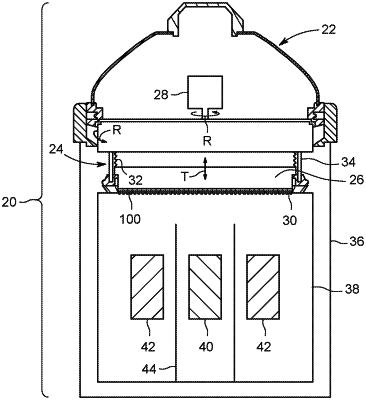| CPC C25D 21/08 (2013.01) [B08B 3/08 (2013.01); B08B 17/02 (2013.01)] | 18 Claims |

|
1. A method of reducing the formation of insoluble deposits in semiconductor electrochemical plating equipment or a surface thereof during electrochemical plating, the method comprising:
removing electrochemical plating equipment or a surface thereof from an electroplating solution, wherein residual electroplating solution is disposed atop the electrochemical plating equipment or a surface thereof, and wherein the residual electroplating solution has a first pH;
contacting the residual electroplating solution with a rinse agent having a second pH similar to the first pH to form a rinsate, wherein the rinse agent is an organic acid; and
removing the rinsate from the electrochemical plating equipment or a surface thereof.
|